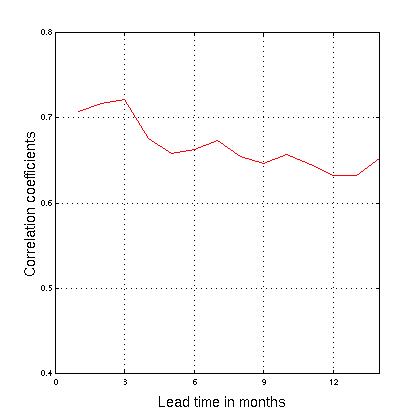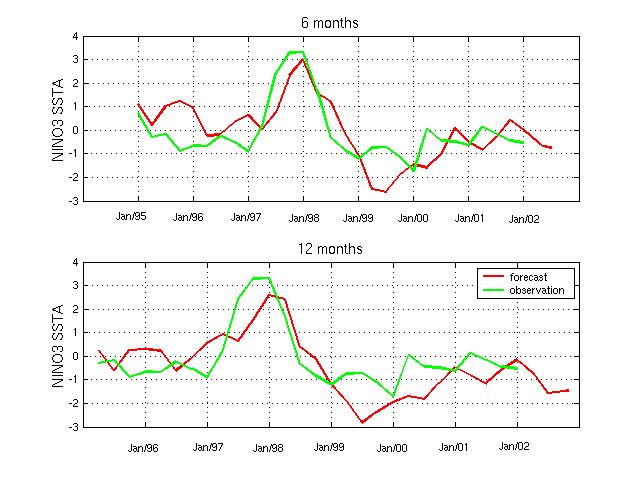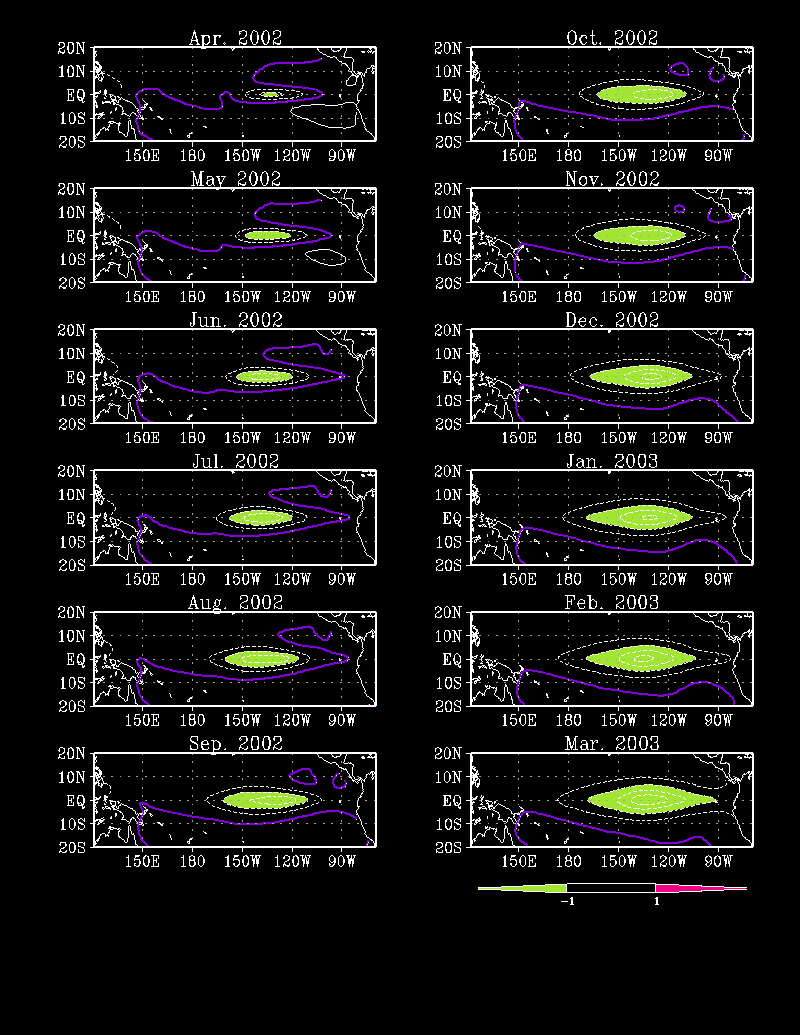Neural-dynamical hybrid coupled model forecasts of the tropical
Pacific sea surface temperatures
Youmin Tang and William Hsieh
The neural-dynamical hybrid coupled model (Tang and Hsieh 2002a) uses
the NCEP sea level height anomaly (SLHA) data to initialize the forecasts
(Tang and Hsieh, 2002b). The assimilation of the NCEP SLHA was found to
yield as great an improvement in the forecast correlation skills as the
assimilation of heat content anomalies (Tang and Hsieh 2002b). Fig. 1
shows the correlation skills of the predicted SST anomalies (SSTA) in
the NINO3 region in the equatorial eastern Pacific during 1990-1999
using our model with SLHA assimilation. The predictions were made at
three months intervals (starting on 1 January, 1 April, 1 July and 1
October) and continued until a lead time of 15 months.
Fig.1 Correlation skills of the predicted NINO3 SSTA

Fig. 2 shows the prediction of the NINO3 SSTA starting from 1995 to 2002 at lead
times of 6 months and 12 months.
Fig.2 Observed and predicted NINO3 SSTA at lead times of 6 and 12 months

Fig 3 shows our latest forecasts (initialized using data till the end of
January, 2002), indicating that the moderate cool anomalies present
during spring, 2002, will further intensify by summer, 2002, reaching
La Nina conditions by fall and winter.
Fig.3 Predicted SSTA of the tropical Pacific
Contour intervals are 0.5 degree Celsius. Positive anomalies above 1
degree are shaded in red, and negative anomalies below -1 degree are in
green. The zero contour is in purple.

References:
Tang, Y. and W.W. Hsieh, 2002a. Hybrid coupled models of the tropical
Pacific-- II. ENSO prediction. Clim. Dynam. (in press)
(preprint in PDF or
postscript)
Tang, Y. and W. W. Hsieh, 2002b: ENSO simulation and prediction in
a hybrid coupled model with data assimilation. J. Meteorol. Soc. Japan
(submitted).
(preprint in
PDF or postscript)
Back to [UBC Climate Prediction Group Home
Page]



